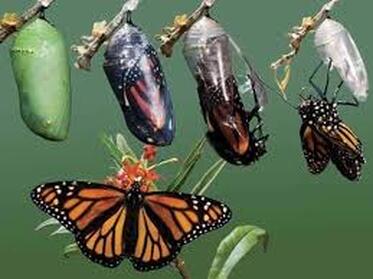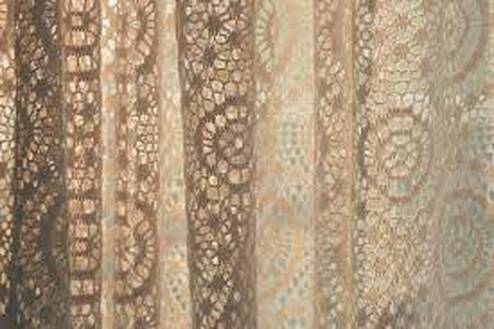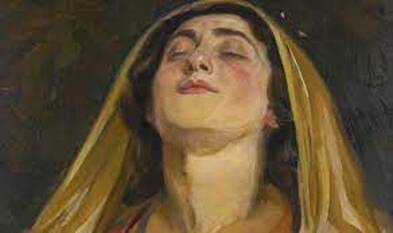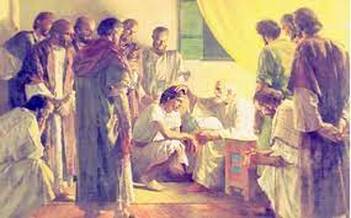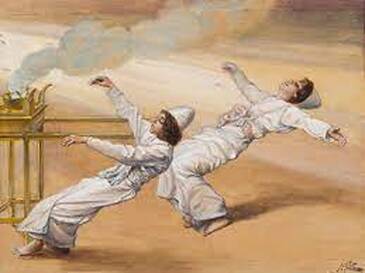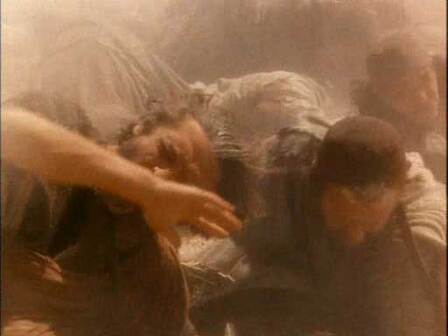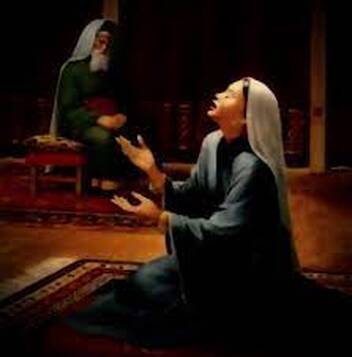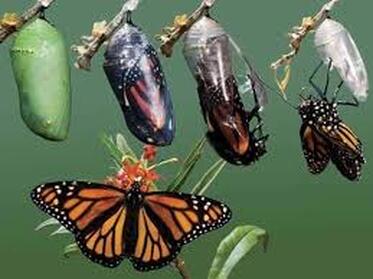 This D'var Torah, offered B"H at the Aquarian Minyan Erev Rosh HaShanah service, September 15, 2023 / 1 Tishrei 5784, responds to the community's theme for these High Holy Days: A Sacred Future Summons Us. Shanah tovah. Here we are. We arrive again at Rosh Hashanah, the Head of the Year, the celebration of the birth humanity. Maybe we’re battered, clearly the worse for wear, but we are here—still here together. Hallelujah! Maybe you’ve been engaged these past seven weeks since Tisha B’Av, or these past four weeks of Elul, in teshuvah, the spiritual and emotional work of returning to essence, to core values, cleaning up your human relationships in order to be square with God. All our efforts notwithstanding, I would guess that we each arrive here tonight in some degree of what our tradition might describe as “tamei.” The Hebrew word tamei is difficult to define. It’s a biblical category, often translated as “impure.” Rabbi David Wolfe-Blank z”l, a teacher for so many of us, spoke of tamei as a “state of being “tainted by death residue.” Many of us have lost loved ones during this past year, even in this past week, and our hearts are with you. Tamei. Many of us feel the encroaching ills of body and mind as the breath of death approaching. Tamei. And as we continue to experience and to witness waves of covid, climate disasters, burgeoning gun violence, police brutality, prison violence, racial hatred, war, human trafficking, and ultimately the extinction of life form after life form from our precious planet—it seems that we all find ourselves smudged with death residue –tamei, tamei! I’ve heard that the human organism responds to the presence of the dying and the dead with a natural recoil, an instinctive drawing away. Rabbi Alan Lew related that when he would visit sick congregants, before entering the hospital or the hospice room, he would pause at the threshold, willing himself to overcome his trepidation so that he could be fully present with the suffering or dying person in that room. I think that Reb Dovid was suggesting that “tamei” was the word our ancestors used to describe this instinctive recoil. To be tamei signifies a kind of shutdown, a sense of being separated from the Whole, cut off from the ongoing stream of life. Tamei names our primal terror of not-being, a fear that freezes the soul, tunnels our vision, chokes off gratitude, and silences praise. Our ancient ancestors deemed a person in a state of tamei unfit to enter the holy Temple environs. Torah tells us in great detail about the metzorah, a person afflicted with a contagious skin ailment. Tamei! Purification required spending time in quarantine, outside the camp, until the symptoms resolved and the High Priest could declare the person tahor, recovered, pure, one hundred percent “back.” The Kohen would then perform a ritual, an animal sacrifice and a dabbing of blood and oil on the ears, thumbs and big toes of the healed person, to welcome them back into the community, into Wholeness, holiness. Tahor. We now know collectively what it’s like to be quarantined, to be “outside the camp.” We who have been ill, maybe housebound, know how painful, how isolating the “brush with death” can be. Confined to our homes, unable to gather in public spaces, to be together in community, we shrivel. In our Zoom-saavy age, we’ve learned to overcome some of this debilitating isolation through technology. But we don’t always know how to transform our tamei-ness, to return to wholeness, to become tahor. We’ve lost touch with the power of those ancient purification rituals, the body-and-soul cleansing of the mikveh, the priestly ceremonies of reentry and rededication. Though in many ways our technology connects us—and thank God, so many of you can be here tonight with us on Zoom—that same technology, misused, abused, makes us even more isolated, as many choose to stay in our homes, doing more and more of our relating on flat, two-dimensional screens. Our world becomes more fractured as lies and vitriol spread through social media and passionately held untruths fuel people’s fear and hatred of one another. Teshuvah in these death-saturated days is of a whole other order. Personal heshbon ha-nefesh, taking stock of my own life, righting my personal relationships is not enough. Now something more global is needed—ongoing processes, daily, hourly, sometimes breath by breath, ways to cleanse my body, refresh my mind, energize myself to take up again and again the small tasks that may cumulatively, collectively lead us toward a renewed world and allow us, please God, to hear and to respond to the call of a Sacred Future. It's taught that our season of teshuvah actually begins with Tisha b’Av, our national day of mourning. We fast. We scrape down to the bottom of our souls, we pray without melody or feeling. We give ourselves a chance to recognize the inner deadness we have allowed to engulf us, and that recognition is the beginning of our return to wholeness. The tears of grief we shed for ourselves, our beloveds, and our Earth wash us clean. They are our mikveh. We chant from the Book of Lamentations, “Shifkhi kha-mayim, kha-mayim libeykh nokhakh p’nei HaShem, Pour out your heart like water before the Mystery.” Weep in the face of the Mysteries we cannot solve, before the Great Mysterious Story of our Cosmos, which we can only glimpse in snatches. Our tears of loss, our wails of grief are the purifying waters, the very waters that begin to render us tahor. Dr. Lewis Gordon, a Jew of color and distinguished scholar, writes, "What many don’t understand about the loss of those we love is their irreplaceability. To love is to see in those we love each day the ongoing possibility of life…. To lose those we love is to experience the shattering of our world, which, for some of us, is identical with losing the world." Surely, we are daily losing our world as we have known it. And yet, just as surely, in the secret spaces of the soil, beneath the surface of the oceans, and in the depths of the hearts and minds of human beings seeking and loving life, the world is being rebuilt, molecule by molecule, cell by cell, breath by breath. Nothing lost, nothing wasted. We, then, become the imaginal cells, carrying the template of the butterfly-to-be during the complete dissolution of the caterpillar in its delicate cocoon. Those cells are the seeds of the Sacred World to come, its beauty and its Mystery. They carry the ancestral DNA of an ethical world, a world founded on the human capacity for empathy, kindness, and the kind of radical love in which, in Dr. Gordon’s words, we “take responsibility for responsibility itself,” in which we humbly know ourselves as part of nature and all humanity, part of a larger ecology of Wholeness. Those seeds have been here all along, are here now, in each one of us, sustaining us even and perhaps especially in our brushes with death, in our losses. We come together on Rosh Hashanah each year to celebrate the imaginal cells that we are, to remember the Whole that we are part of, to reaffirm our love, our commitment, to bless one another with the capacity to remember, so that we can, literally or imaginally, drop to our knees and lie on our bellies on the Earth on the afternoon of Yom Kippur and rejoice in the High Priest’s cry of Tahor! So that we can remember that this is not a once-a-year moment, but a daily sacred charge, to nurture those imaginal cells within, to keep them alive and pass them on. In the final verses of his masterful poem, “In Memory of W.B. Yeats,” W.H. Auden speaks to this necessary process, a ritual of remembrance and healing, if you will. Written in 1939 on the precipice of World War II and the Sho’ah, these verses affirm the power of poetry to cleanse and heal us. As you take in Auden's immortal words, feel how profoundly resonant they remain, more than 80 years after he wrote them: In the nightmare of the dark All the dogs of Europe bark, And the living nations wait, Each sequestered in its hate; Intellectual disgrace Stares from every human face, And the seas of pity lie Locked and frozen in each eye. Follow, poet, follow right To the bottom of the night, With your unconstraining voice Still persuade us to rejoice; With the farming of a verse Make a vineyard of the curse, Sing of human unsuccess In a rapture of distress; In the deserts of the heart Let the healing fountain start, In the prison of our days Teach the freed ones how to praise. Hearing these verses, we can each ask ourselves, what is my poetry? What is my art, my prayer, my faith, my work, my play, my joy? What is the part of me that remains tahor, life-focused, begging to be discovered, recovered, resuscitated, eager to answer the summons of the sacred future? In the deserts of the heart Let the healing fountain start, In the prison of our days Teach the freed ones how to praise. Keyn yehi ratzon, may it be so. May fountains of healing spring from our broken-open hearts and praise pour from our mouths, as we turn to face the year ahead. May this be, truly, a shanah tovah.
2 Comments
September 2022 - Tishrei 5783 |

